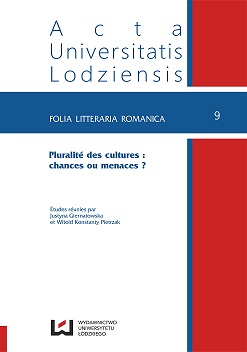From chronicle to politics: the story of the Cruel Moor from the Middle Ages to the 17th century
DOI:
https://doi.org/10.18778/1505-9065.9.03Keywords:
Moor, slave, mutilation, revenge, rewriting, short stories, drama, 10th-17th centuriesAbstract
The story of the Moor who takes a cruel revenge on his master seems to notably express a human’s preference for bloody fait divers. It has been constantly quoted and adapted since the 10th century, serving as an exemplum which allows the authors of different nationalities to reflect on the contemporary events. The narrative structure is subjected to several modifications; however, it always contains a significant number of brutal aspects related to the act of vengeance. In fact, the force of precise and violent description correlates with the exhortation, characteristic of most of the works in question. We can observe simultaneously a certain evolution of story’s interpretation that the authors impose on the readers: being at first a part of a chronicle and collection of exempla, it gains a moral character in the late Middle Ages, to become finally a source of the political reflection which is particularly evident in 17th century France. All those factors, as well as the authors’ choice of literary genres, help to represent the social, moral, religious and ideological reality of the period of which the slavery is an integral part.
Downloads
Downloads
Published
How to Cite
Issue
Section
License
Copyright (c) 2014 Justyna Giernatowska

This work is licensed under a Creative Commons Attribution-NonCommercial-NoDerivatives 4.0 International License.













